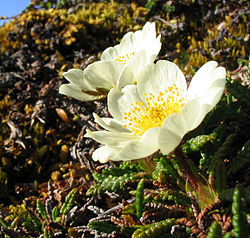A colleague alerted me to a small town Nevada newspaper (The Ely Times) that has recently taken to publishing some rather egregious contrarian editorials and op-ed pieces about climate change (see e.g. here, and here).
Much in the spirit of what we attempt here at RealClimate (that is, public outreach and education), I figured I’d make an effort to inform the paper’s readers of the misleading nature of what they’re being told.
I decided to respond to their most recent editorial ‘Is CO2 a Poison?’ and other questions which wasn’t really a contrarian hit piece (i.e., what we’re used to seeing on the op-ed pages of the Wall Street Journal) so much as a confused mix of half-truths, irrelevant facts, flat-out errors, and, admittedly, some reasonable points (e.g. that there are challenging issues of fairness in how we go about achieving greenhouse gas emissions cutbacks). My letter was firmly critical, but, I felt, reasonably polite and fair.
I never received any correspondence from the editor (Kent Harper), and assumed that he had thus chosen not to publish my letter. So you can imagine my surprise yesterday in finding that, not only did the editor publish my letter, but in fact ran a contemporaneous and scattershot rebuttal along with it.
What I found particularly amusing was his denial that the original editorial contained any errors, as I had asserted. In particular, he challenged me to defend my assertion that he was wrong in claiming that the natural greenhouse effect leads to a warming of about 100F and that the correct number was closer to 60F.
Here is Mr. Kent, in his own words:
I asked Dr. Mann, in an answer to his e-mail, if the Wikipedia entry on the Greenhouse Effect (http://en.wikipedia.org/wiki/Greenhouse_effect) was incorrect. It said: “The Earth’s average surface temperature of 15 C (288 K) is about 33 C warmer than it would be without the greenhouse effect.” A celsius temperature of 33 degrees, converts to 91.4 degrees Fahrenheit, which I rounded off to “almost 100 degrees”.
Kent: if you are reading this, I would be more than happy to personally answer your question. But since you’ve decided to take our ‘discussion’ public anyway, I thought I’d rather use this as a ‘learning moment’ here at RealClimate. So I encourage our readers to provide their own answers to your question in the comments below.


